laser
Latest
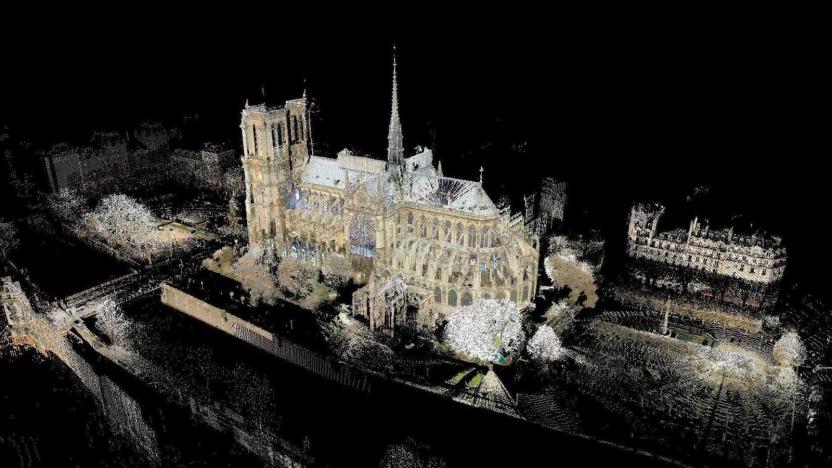
The billion point laser cloud that will help rebuild Notre Dame
On April 15th, 2019 around 6:40 pm, I was walking around the Jardin du Luxembourg park in Paris with some friends when we saw some yellow colored smoke in the sky. We thought nothing of it, but soon discovered, shocked, that one of the most famous landmarks in the world, the Notre Dame cathedral just north of the park, was engulfed in a terrible blaze.

Apple's 2020 iPhones may use laser-assisted 3D cameras
Apple's plans to improve iPhone photography might go well beyond adding a third rear camera. Bloomberg sources say the tech giant is developing a 3D camera system that uses a laser scanner to capture depth information at distances much greater than the dot projection system used in Face ID on current iPhones. Augmented reality is reportedly the main focus, since this would help gauge dimensions, but it would also help with portrait mode photos that currently have to rely on software to detect foreground objects.

LG's Laser 4K beams a 120-inch picture from seven inches away
Just as surely as CES comes around, LG shows up with a laser projector to hopefully tempt you into ditching that TV. This year's attempt is another CineBeam model, and the Laser 4K is ready to compete with the likes of Hisense's home-theater-in-a-box projector and the ultra-expensive Sony projectors we've seen in past years. The HU85L doesn't list HDR support, but it has a "wide color gamut" and can project a 120-inch screen while placed just 7 inches away from a nearby wall, floor or ceiling, or a 90-inch screen from 2 inches away. There's no word on a price or release date, but it is, of course, equipped with the company's ThinQ AI for natural language voice control and a Magic remote with gesture control. With 2,500 lumens of brightness it's intended for use in more than just darkened home theater rooms, but we'll need to see it in Las Vegas to know how good it really is.

A powerful laser 'porch light' could let aliens know where we are
An MIT researcher claims a laser space beacon detectable up to 20,000 light years away is feasible -- essentially acting as a porch light for extraterrestrial life. James Clark's study posits that focusing a one- to two-megawatt laser through a 30- to 45-meter telescope and aiming it into space would create a beacon that would emit enough radiation to be distinctive from the sun's infrared energy.

NASA will launch its ice-tracking satellite ICESat-2 on Saturday
On Saturday, NASA will attempt to launch its Ice, Cloud and land Elevation Satellite-2, or ICESat-2, a satellite that will help researchers measure the height of natural features on Earth. With the help of a powerful on-board laser, ICESat-2 will measure changes in Earth's ice across seasons and years. "Retreating glaciers. Shrinking sea ice. Melting ice sheets. The frozen reaches of Earth are changing at dramatic rates," NASA said, "and the impacts, from sea level rise to altered weather patterns, span the planet." So ICESat-2's mission is to collect incredibly precise measurements of Earth's ice as well as the heights of other features like forests, oceans and clouds.

Audi’s HD Matrix LED lights may soon be allowed on US roads
Headlights typically serve one purpose -- helping drivers see the road. To illuminate the asphalt at night the lights traditionally had two settings. Low beams for driving around town and passing other vehicles or high beams for seeing more of the road and surrounding area. That's pretty much all we've had for decades. While cars in the United States still operate like this, in other parts of the world -- thanks to technology -- lights have evolved.
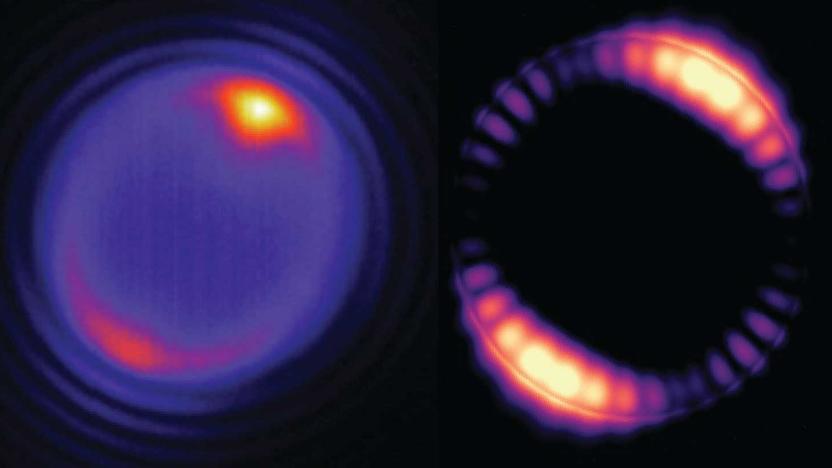
Cell-sized 'microlasers' could regulate brain activity
Scientists have spent years creating ever-smaller lasers. Berkeley Lab's latest invention, however, is something special -- and could lead to a significant change in medicine. An international team at the school has developed "microlasers" that are smaller than a red blood cell. The researchers discovered that 5 micron-wide polymer beads mixed with exotic nanoparticles (sodium yttrium fluoride infused with thulium) could reliably emit bright light on specific wavelengths when exposed to infrared light. The concoction makes light bounce around the inner surface of the bead, creating collisions that can repeatedly amplify the light -- it's similar to the "whispering gallery" effect that lets you hear a quiet sound across a giant space with the right acoustics.

Scientists create ultra-thin membrane that turns eyes into lasers
It will still be a while before scientists are able to harness Superman-like laser vision, but the technology is now closer than ever before thanks to a new development from the University of St Andrews. The team there have created an ultra-thin membrane laser using organic semiconductors, which is for the first time compatible with the requirements for safe operation in the human eye. Even though the membrane is super thin and flexible, it's durable, and will retain its optical properties even after several months spent attached to another object, such as a bank note or, more excitingly, a contact lens.

Apparently high-definition vinyl is coming next year
The process of making records hasn't changed much over the last hundred or so years, but that itself could change soon. Austria-based Rebeat Innovation has begun the work to bring vinyl into the 21st century. Of course, that involves lasers. Specifically, converting analog audio information into a digital, 3D topographic map of the music, and then etching that into a platter with light. According to Pitchfork, this process will result in around 40 percent longer playing times per side, 30 percent more amplitude and will offer better sound quality overall. It'd also sidestep the chemicals typically used in the record-making process.
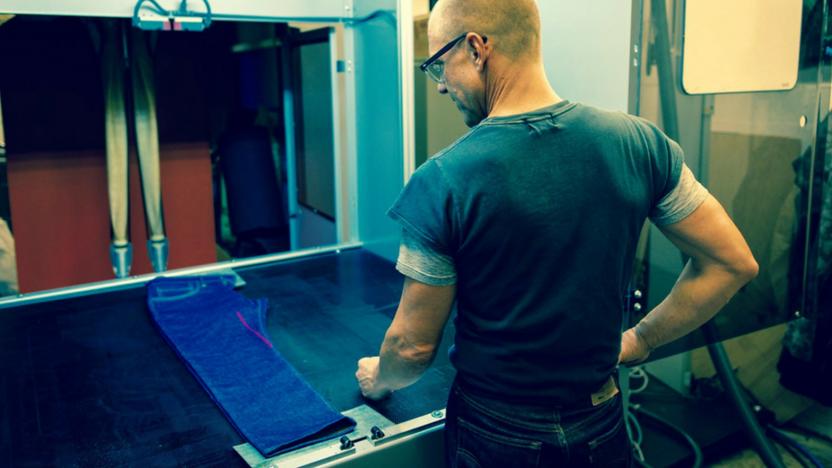
Levi's uses lasers to give your jeans an eco-friendly finish
You may like the thought of jeans with a worn-in finish, but that look frequently comes at a steep cost. It not only takes a long time to finish jeans (two to three pairs per hour), it frequently involves thousands of chemical formulations. Levi's thinks there's a faster and more environmentally responsible way. It recently introduced Project FLX, a system that uses lasers to finish denim. The technique involves taking photos of the jeans and illustrating them-- the laser then gently marks the jeans based on that illustration to create the simulated wear. This cuts the finishing time from several minutes or more to just 90 seconds, and whittles the number of necessary chemicals down to a "a few dozen."
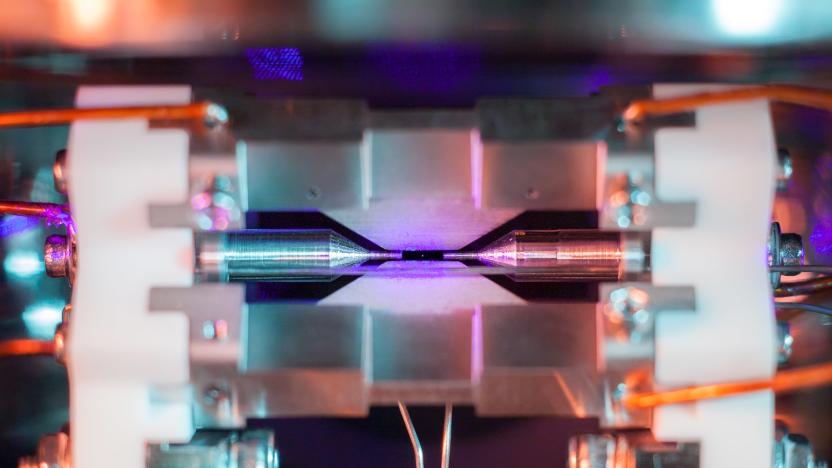
A 'trapped' atom is visible to the naked eye
The tiny dot in the center of the screen, between the two metal electrodes, is the light emitted by a single atom. The photo, Single Atom in an Ion Trap, just won the grand prize in the UK's Engineering and Physical Sciences Research Council (EPSRC) science photo and imaging contest. "The idea of being able to see a single atom with the naked eye had struck me as a wonderfully direct and visceral bridge between the miniscule quantum world and our macroscopic reality," said Oxford University quantum physics professor David Nadlinger, who took it.

Ancient city's LiDAR scans reveal as many buildings as Manhattan
When researchers surveyed the ruins of a Purépecha Empire city in Mexico the old-fashioned way a decade ago, it took them two seasons to explore two square kilometres. Good thing they decided to use LiDAR, because the city called Angamuco turned out bigger than they previously thought. LiDAR gave the researchers the power to see underneath the lava that covers Angamuco. Thanks to the laser technology, they now know that the city occupied 26 square kilometers of land instead of 13 square kilometers. Colorado State University archaeologist Chris Fisher is presenting that finding and all the latest info on his team's study at the ongoing American Association for the Advancement of Science conference in Austin.

New laser technology could improve how scientists study molecules
We use lasers for a lot of things, from cutting metal to improving eyesight, but lasers have their limitations. One major holdup is that they can only emit certain types of light. Researchers have gotten around this particular limitation by using what are known as optical parametric oscillators, which allow regular laser light to be converted into other wavelengths of light that may be useful for certain areas of research. One example is studying how molecules behave. However, these gadgets have their limitations too. They typically have weak outputs and they require extreme stability and precision, making them hard to use outside of highly controlled lab environments. But researchers at Stanford may have found a way around this issue and their work could make these systems more efficient and easier to use.

LiDAR reveals Mayan mega city hidden in Guatemalan jungle
A vast Mayan megalopolis apparently lies hidden underneath all the trees, creepers and centuries of growth and soil in the Guatemalan forest -- and we might never have found it if not for the wonders of laser technology. The PACUNAM Foundation, which champions the use of scientific research to preserve cultural heritage, has scanned the jungles in the country using Light Detection and Ranging (LiDAR) technology and found an interconnected network of ancient cities. They discovered 60,000 previously unknown structures without having to cut down a single plant, and that discovery changes many things we thought we knew about the ancient civilization.

Chinese scientists unveil plan to zap space junk with orbital lasers
There have been more than a few proposals for eliminating space junk, such as grabbing it, gobbling it and blasting it from Earth. The latest idea, however, may be the most dramatic... and the most effective. Chinese researchers have successfully simulated an orbital laser station that would zap small debris (under 4 inches long). The system would zap targets with 20 bursts of light per second for 2 minutes, either deflecting the junk out of harm's way or sending it to a fiery end in the atmosphere.
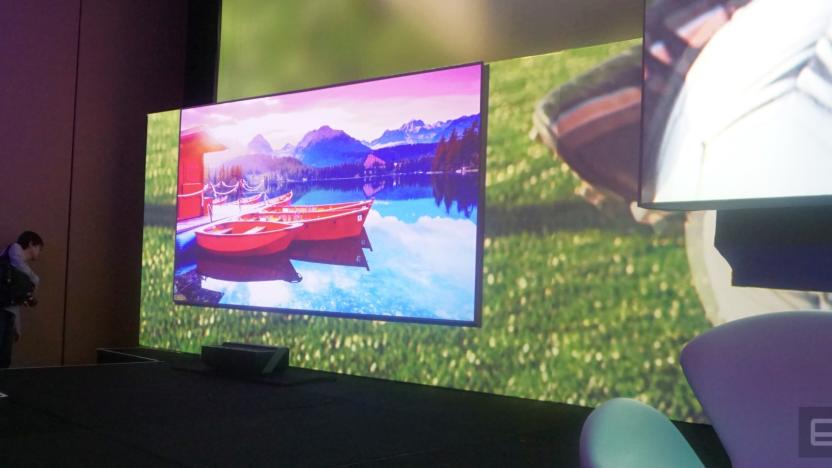
Hisense shows a 150-inch 4K 'Laser TV' projector
One last surprise at the Hisense CES 2018 press conference was this short-throw projector, a 150-inch version of the 4K Laser TV projector it launched last year. The company didn't mention a release date or price, but president Liu Hong Xin opened this event by stating the company plans to press forward with the technology. Besides the $10,000 100-inch model on the market, it will also demonstrate 80- and 88-inch versions in its booth on the show floor.
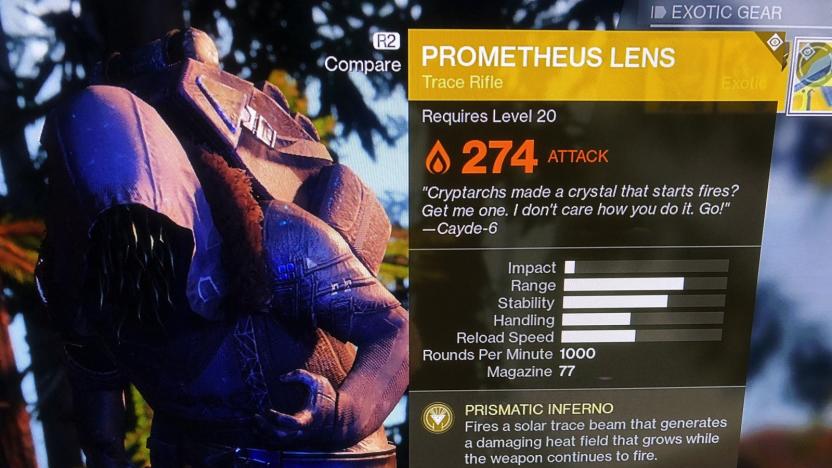
Bungie feeds ‘Destiny 2’ trolls a ridiculously overpowered gun
Bungie responded to Destiny 2 player's complaints by cancelling a planned "Curse of Osiris" DLC livestream to detail new changes. The developers added more endgame rewards, a new weapon class and an improved economy to address those concerns. Recently, a massively overpowered, game breaking laser gun called the Prometheus Lens was available to high-level players as a random drop, making it too easy for those who found it to dominate the PVP maps. Bungie had plans to fix the issue, but maybe it's grown tired of all the whining, since Destiny 2's exotic weapons sales-alien, Xur, has the gun on sale for anyone who wants it.
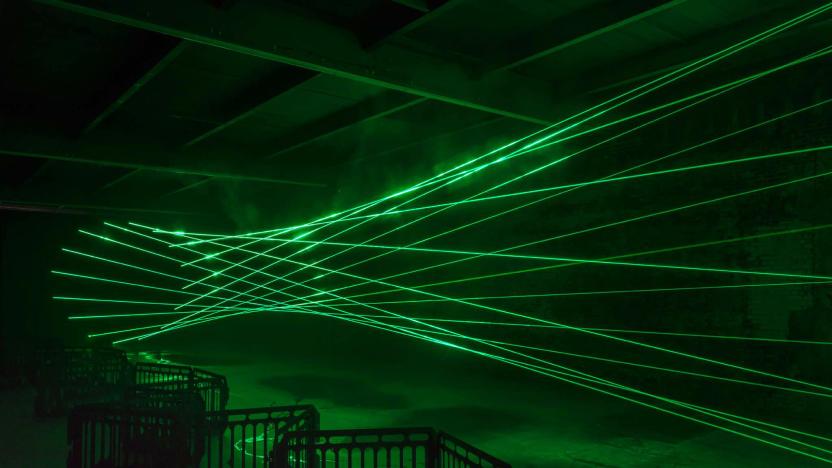
Laser wormhole art is as dazzling as it is dangerous
When an artwork features both high-intensity lasers and a carbon fiber sculpture to keep spectators back, you know it's not going to be dull. Rita McBride's Particulates art installation at the Dia Art Foundation in Chelsea, New York features 16 lasers, scattered by particles of dust and water, forming a visual depiction of a science fiction "wormhole." The barrier, meanwhile, is meant to keep you away from said lasers, which are strong enough to do some harm.

Apple’s 2019 iPhone could have a rear-facing 3D sensor
Apple has made no secret of its interest in augmented reality (AR) -- in interviews CEO Tim Cook gives it as much attention as sales growth. Now, it's rumoured that the company's 2019 iPhone release will come with a rear-facing 3D sensor, potentially turning the model into a leading AR device.

Corkscrew light beams could lead to practical quantum computers
Who said light only had to travel in boring waves or particles? Not Harvard. Its researchers have found a way to spin light into complex states that promise breakthroughs in multiple fields. They've built metasurfaces whose elaborate optics combine two kinds of light momentum (orbital angular and spin angular) to send light into corkscrews, spirals or even fork-like shapes. If you want to change the light state, you just need to change the polarization of that light.









